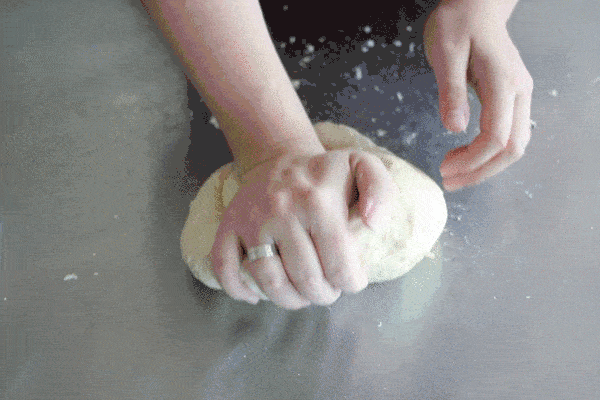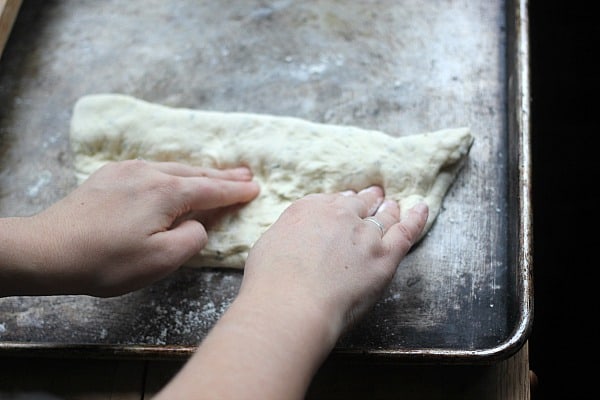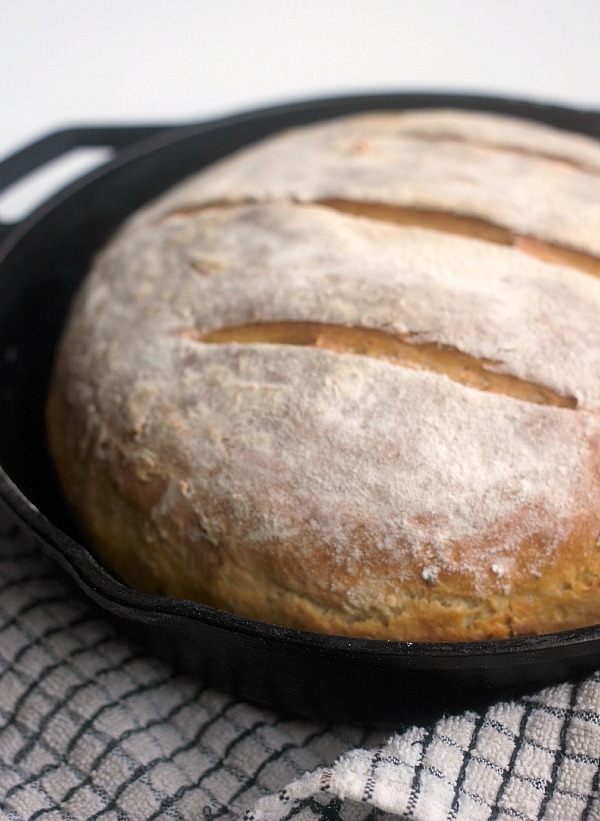Intro to Bread Making: The Basic Process
Learn the basic steps of how to make bread dough. This general process is used for all yeast breads with slight variations for each type.
The process of how to make bread dough can be a bit confusing if the general steps are not understood. There are 8 basic steps that the production of all yeast doughs follow.
Keep in mind that each step may have slight variations based on the specific yeast bread being made.
Watch the Video
How to Make Bread Dough
While each variety of bread will have slight variations, the basic process of making bread dough is the same across the board. These are the basic steps for how to make bread dough:
1. Mise en Place (Scaling)
Before starting the bread-making process, it is important to gather all of your ingredients (mise en place) and measure them accurately. Measuring ingredients by weight is a much more accurate way to measure and is the preferred method for bread making.
Optional Step: Proofing Yeast
Some bread recipes include a step prior to mixing the dough called “proofing the yeast.” This step involves hydrating dry yeast in some or all of the liquid used in the recipe and adding a pinch of sugar.
The water wakes the dry yeast up from its dormant state and the sugar gives the yeast something to feed on. After mixed, you will allow the mixture to sit for 5-10 minutes to check for foaming. Bubbles and foaming are signs that the yeast is alive and you can add it to your dough.
While this step is never required, it can always be used to jump start your yeast and to check that it is alive. I recommend doing this if you are brand new to bread baking or if you are worried that your yeast might be old.
Note: The original form of active dry yeast did require that you hydrated it prior to adding it to your dough. However, these days it does not require this. You can add either active dry or rapid rise yeast into your dough without proofing, or you can choose to proof them if you like.
2. Mixing
The order in which ingredients are combined varies based on the types of bread. The straight dough method, the modified straight dough method, and the sponge method are the three mixing methods for combining ingredients for a bread dough.
3. Kneading
After the ingredients for the bread dough are combined the dough is kneaded. Dough can be kneaded in a stand mixer using a dough hook, or by hand. Knead the dough until it is smooth and elastic.

The length of time dough is kneaded depends on what kind of bread you are making. Doughs without any fat (lean dough) will be kneaded longer, while bread dough that contains fat (enriched dough) will be kneaded for a shorter period of time.
Kneading Dough: Kneading bread dough is an important process to developing a gluten structure which strengthens the bread. It also creates a more even crumb for the final product and improves the flavor of the bread.
4. Bulk Ferment (1st Rise)
After the dough is mixed and kneaded, it is allowed to rest and ferment. Fermentation occurs when the yeast begins to feed on the starches and sugar present in the dough. As the yeast feeds, carbon dioxide is produced which makes the dough rise and develops the texture and flavor of the bread.

5. Shaping
After the dough has bulk fermented, it is shaped into rolls, loaves, or specialty shapes likes braids.

6. Proofing or Proving (2nd Rise)
The term proofing also called proving, refers to the rise that happens after the dough is shaped. The same fermentation process is happening during this step as it is in step 3, but this is where the shaped dough gains the bulk of its volume. Typically, shaped bread dough should rise until double in size.
Why is it called proofing?
When dough rises it is “proof” that the yeast is alive and that the bread will continue its rise in the oven.
7. Baking
After the bread has proofed sufficiently it should be baked. If you wait too long to bake the bread dough after it has proofed, it can overproof which will cause a sour taste and large holes in the final product.
Bread is cooked through when its internal temperature reaches 190-200 F (99-94 C).

Resources
- The Professional Pastry Chef, Bo Friberg
- Professional Cooking, Wayne Gisslen
- On Food and Cooking, Harrold McGee



41 Comments on “Intro to Bread Making: The Basic Process”
Ahhh your posts always make my inner baking nerd come out in fascination!
Goal accomplished! Thanks lady! 🙂
Thank you for ALL the GREAT info.
What is the 8th step of “8 basic steps that the production of all yeast doughs follow”?
Is it the eating step? ♥️
What to do if the dough is overproofed after retardation?
WHAT do u mean by lean dough and enriched dough? Does it mean the fats we add like butter or oil? Or the nutrition value of flour that we use while making it? What is wheat flour- enriched or lean?
I am not able to make wheat flour bread properly and ur reply might help me do it.
Thank u
Your detailed description on basic steps on how to make bread are essentially helpful.
I’m so glad!
Actually I have a exam and I want to know how to make.
Hi Bettie
Thank you very much indeed for your wonderful help regarding baking.
I am a fellow who has started to get into cooking now that we are all in lockdown.
You explain and deliver all the information in an exemplary delivery.
Thank you.
From an English friend
Victor
Thank you for sharing info on bread making.
You’re very welcome!
Thanks for this video. I am new to making challah and was kneading incorrectly. You have shown me the correct way. Next Thursday evening I’m going to try retardation just to see what difference it may have in the final process. Thanks again!
Shabbat shalom
Your teaching was good and easy to learn.
I’m so glad!
Very educative
Thanks it is so helpful
I’m glad!
Informative and educative,most of all enjoyable
Thank you!
Thanks the notes are well summarized and easy to understand.
I’m so glad!
Glad you like it!
Good, simple to follow and elaborate recipe thank you.
you’re welcome!
Thanks, it was helpful
I’m so glad!
Thank you Bettie. The above info in basics of bread making helps.
The bread making process is clear and understood. My question is why the fat dough is mixed for a short time because it’s a reach dough,so it mean that elasticity is not developed can this be bread,scones or cake?
Thanks for explaining the process so clearly!!
You’re welcome!
so good report
Thank you.
Was really helpful
Good day here today,
I am Baker by professional make a bread and distribute it, but i need a help to promote and build my business more and more
I teach a baking class in a high school and I only have 90 minutes. Can the students refrigerate the bread dough twice ( 1st fermentation and after the shaping and bake on the third day? I would set the dough out a few hours before class starts and I use compressed yeast. Not sure if it is rapid rise. I want the students to see the dough in each phase and have to determine if the bread is done baking. I love bread making but I want the students to learn the process.
Thnx ive learn a lot
I love the information, thanks.
The art of baking is life.imagine how would the world be without bread
Omg i feel mixing some right now yummy taste not butter only at osun state
I really appreciated for helping us to became an entrepreneur
All bread recipes say something like ‘allow to rise until doubled in size’.
How can you tell when it has doubled?